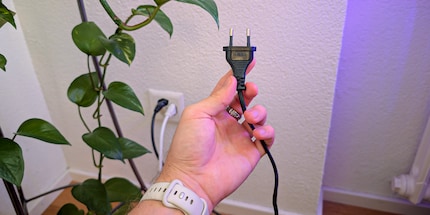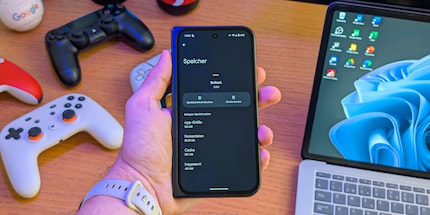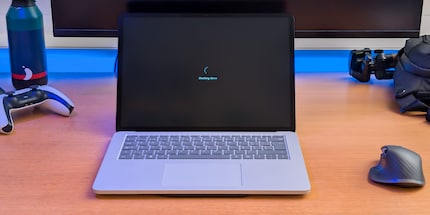
Background information
Switching to Linux: not even that hard
by Kevin Hofer

«Have you tried switching it off and on again?» is probably the most common question asked by every IT manager. And is often the most common solution when technology doesn’t play ball. So what’s behind this all-purpose fix?
Just as I begin writing this article, my monitor starts to go haywire. Well, a display error pops up. Almost instinctively, I reach for the cable on the back and pull it out. A few seconds later I plug it back in, et voilà, problem solved.
It’s happened to us all: the error LED on the router flashes, the TV stutters or the PC freezes. And you can practically solve any of these problems using the same method. «Just turn it off and on again!» you probably shout inwardly at the screen. Or you pull the plug, depending on the situation.

Sure, but how can such an apparently ordinary action be an absolute miracle cure? What exactly happens when the infamous switch is turned off and on again?
I don’t really want to go into the technical details too much. But for those who are interested, here’s the short version: practically every electronic device has a microcontroller or microchip and a working memory. Running programs are operated and temporarily stored there. And since all software is known to have bugs, sometimes malfunctions or hang-ups can occur.
This is when the software «gets lost» in a situation that was never intended by the developers. There’s no programmed solution to get out of the situation, which is why we have to provide manual help. As soon as power’s removed, all information from the working memory – including bugs – is deleted. If power flows again, the software’s reset to the start status – and the problem’s usually solved.

Incidentally, this also works in a similar way if you kill a program on your PC via the task manager or clear the cache of an app on your smartphone.
An analogy can make this whole thing much more tangible. Something very similar often happens to us humans. For example, when you have an important decision to make or your to-do list is overflowing. Overstimulation like this can trigger a real paralysis in us and we don’t know what to do next. Probably the most common advice is to sleep on it.
Even we can get lost in «ifs» and «buts» and lose sight of the big picture. When this happens, it usually helps to clear your head. Be it a walk, a change of scenery or a good night’s sleep. Just like a computer chip, which has to empty its memory every now and then in order to continue functioning properly.

I also like the comparison from this Reddit thread: «Imagine you’re going shopping. You know the way from your home to the store well, but accidentally take a wrong turn on the way. Now you’re lost and can’t find your way to the store or home. But if you could be teleported back home, you should be able to find your way back to the store, right? For your computer, switching it off and on is like being teleported home.»
But before you start hitting the power button every time there’s a problem, I have to warn you. You should always be careful when switching PCs and smartphones off and on again. Of course, the working memory doesn’t just store bugs and errors in the software. Documents, open websites and running programs are also cached here. You might lose important information and content when you press On/Off. In most cases, you can simply close the program that’s frozen. So before you pull the plug, be sure to open the task manager!
I've been fascinated by all things keys, displays and speakers for basically as long as I can remember. As a journalist specialising in technology and society, I strive to create order in the jungle of tech jargon and confusing spec sheets.
Interesting facts about products, behind-the-scenes looks at manufacturers and deep-dives on interesting people.
Show all